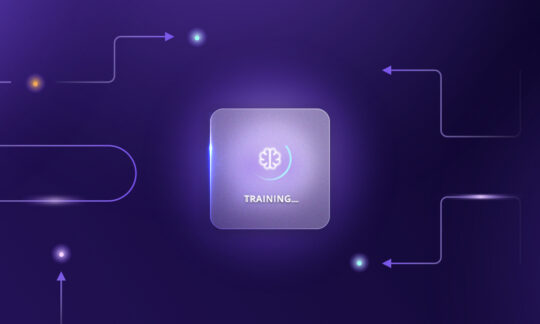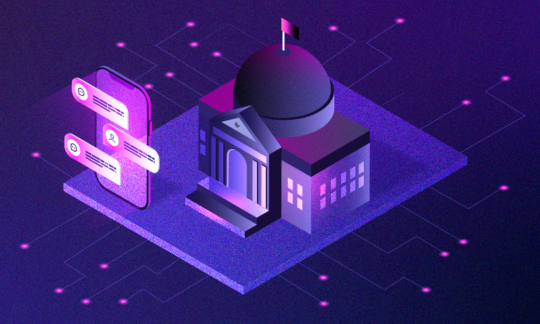Voicebots vs chatbots – key differences and applications
Can you believe that in 2019, 25% of all customer interactions were subject to automation through AI or machine learning? This number is expected to reach 40% by 2023. This clearly shows that an increasing number of businesses see value in automating parts of their customer service. However, they still have to make the decision on which solution to choose – an AI chatbot or a voicebot.
In the following article, we’re going to explain the difference between chatbots and voicebots, as well as when one might be preferably over the other. Let’s get right to it!
What is a chatbot?
Chatbots are a type of software that communicates through a “conversational interface.” They are most often employed by businesses as virtual customer support agents to relieve staff from answering repetitive queries.
There are two main types of chatbots present on the market:
Rule-based chatbots
These types of chatbots are trained to understand human queries based on regular expressions. Also known as ‘decision tree bots’, they are quite basic in their functionality. They don’t have learning abilities and can only understand what they’ve been directly trained to. If you were to ask the same question in a number of ways, chances are a rule-based chatbot would not be able to always provide you with an answer.
Let’s assume you want to ask about the opening hours of a business. If you ask “what are your opening hours?”, the bot will likely do a good job of giving you the right information. However, if you were to use the expression “are you still open?”, the software might not be able to understand it’s the same question. Therefore, it might not tie it to right response.
Needless to say, businesses require much more powerful solutions, which is where AI chatbots truly shine.
AI chatbot
AI-based chatbots are way more powerful than their rule-based counterparts, as they are built to learn and improve over time. Unlike rule-based chatbots, they understand synonyms and read between the lines. If you provide a list of phrases, an AI chat bot can easily use them to learn another 20-30 words.

Source: SentiOne AI Assistant
AI-powered bots have gotten so powerful that 27% of respondents to a PwC survey weren’t able to distinguish whether they’ve spoken to a real support agent or an AI chatbot. That’s something unattainable for rule-based chatbots!
What is a voicebot?
A voicebot is basically a chatbot with a voice. It’s software based on artificial intelligence, which allows voice interactions with devices and services. Voicebots are typically used to save users from endless, frustrating menu navigation on phone calls.
Voicebot vs Chatbot – when to use them?
In some situations, voicebots might be preferable to chatbots. Consider these four criteria when choosing which bot is the right option for you.
#1 Who your customers are and how they interact with you
For starters, reach into your customer analytics tools or refer to your marketing persona. How old are your customers? Do they contact you via online channels, such as email or messenger apps? Or maybe they prefer to interact with your business via voice channels, like phone calls?
These are just a few of the questions you should answer. The ultimate goal here is to determine how tech-savvy your users are and whether they already spend a lot of time online. If they do, they’ll likely find a chatbot more convenient – at least for basic question-and-answer interactions. This leads us to the next point.
#2 Consider your business niche
Another important factor is what industry you’re operating in and how many complex processes you must handle. There are certain businesses such as insurance, banking, and healthcare companies – where customers might need to provide sensitive data before getting their questions answered. Some people might not be keen on sharing details such as their ID number or credit card details in text form due to well-founded fears of data leaks. Here’s where they might deem a voicebot a better option.
#3 How do you convey information?
When you choose between an chatbot and a voicebot, one of the criteria to consider is the way that information is transferred, as well as its volume. It can be conveyed in three ways:
- by seeing – these include videos, images, and user interfaces depicted in a graphic form
- by hearing – including voice interfaces like Alexa or Google Home
- by reading – interfaces containing text.
The largest information volume can be processed by seeing. It’s also the quickest. Next comes hearing, with reading being last. When you want to communicate a lot of information quickly, then you’re better off selecting a voicebot. The faster you get your message across, the lower the chance they’ll bounce off the conversation.
On the other hand, some people have short attention spans – as such, they can’t retain the entire message unless it’s in text form. For accessibility’s sake, it’s good to accommodate such users with a text-based chatbot.
#4 How difficult can the user scenarios get
Ask yourself – which processes take the longest time to resolve? Will your bot need to jump between resources or connect you to multiple customer support representatives before completing the request? If so, consider using a chatbot. If it takes 20-30 minutes to help your client, it will be more convenient to have the bot work in the background than to keep the client on the phone.
#5 The type of information you’re processing
There are different types of information that you can process, including images, text, and audio. Obviously, voicebots can only understand audio, while the latter can also process text, images, and videos.
Let’s imagine you have an e-commerce store, which includes plenty of images of products. In this case, using a chatbot would be more suitable as it would enable users to glance at multiple images and compare products.
However, if you owned a music platform like Spotify, you could offer a voicebot to let your users select songs more easily while driving. They wouldn’t have to take their eyes off the road.
Now that we have covered all the criteria for choosing the right type of bot, the question “what is the best option” still remains.
The best option? Using both to cover all use cases/communication channels
You don’t have to limit yourself to just one option – you can simultaneously use both a voicebot and a chatbot. They can complement each other on different stages of the user journey – therefore covering all of your bases.
Both solutions should use consistent branding – after all, they’re an extension of your customer service. While selecting a voicebot, ensure that it is equally powerful to your text-based chatbot. If you’re on the lookout for a solution that incorporates both technologies, then consider SentiOne:
- Our voicebot is trained to understand different ways in which questions can be asked, which makes user communication easier and more accurate
- Our bots leverage tons of data that we’ve accumulated over the years which helps them better understand user intention (with 96% accuracy) – that means less customer frustration. Also, fewer cases need to be transferred to customer agents, leaving them more time to deal with issues which require human interaction
- Our solution understands slang and synonyms; customers can stick to their communication style and can speak as fast or as slowly as they want.
Summary
If you’re in the market for an AI chatbot, there are a few things worth considering. Firstly, understand how accustomed your clients are to using online tools and whether they even have time to call a company in the first place. The more tech-savvy they are, the more convenient it will be for them to use a text-based solution. On the flip side, if you process sensitive personal data, need to identify the caller, and have a customer base that prefers calling your support department, consider a voice bot.
The best decision, however, would be to choose a 2-in-1 solution, such as SentiOne, which lets you run an equally knowledgeable chatbot and voicebot. That way, you’ll give your clients the comfort of reaching you however and whenever it’s most convenient.
Interested in seeing our solution in action? We’ll be happy to schedule a free demo!



